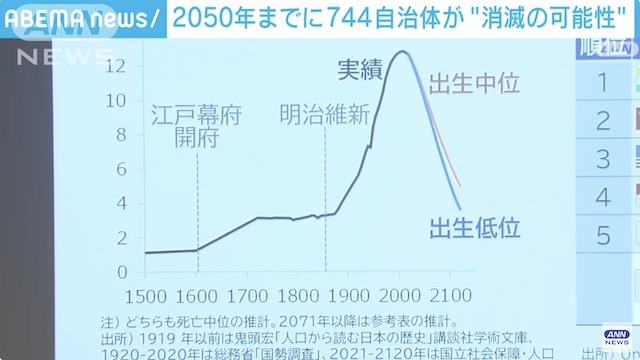TOKYO, Apr 25 (News On Japan) - A private organization has revealed that approximately 40% of the national municipalities, totaling 744, could potentially disappear by 2050 due to declining populations.

The expert-led private group, "Population Strategy Council," defines municipalities where the population of young women falls below half as "municipalities at risk of extinction." It has announced that 744 municipalities nationwide fall into this category.
A decade ago, the number of such municipalities was 896, but this figure has decreased thanks to an increase in foreign residents.
Despite this slight improvement, the fundamental issue of low birth rates remains unchanged. The council is calling on local governments to implement measures to improve birth rates.
Regionally, the Tohoku area has the highest number and proportion of "municipalities at risk of extinction," with 165 municipalities falling into this category.
Source: ANN














